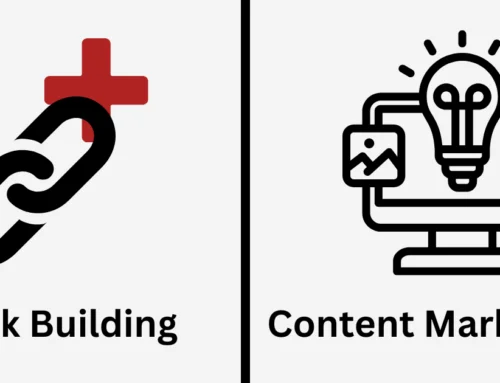Before we dive into how to get backlinks for blog, you need to know that there are two aspects of SEO to increase traffic without paying for ads:
- Relevance: Understanding what your audience wants and providing top-quality, relevant content will allow Google to easily select it as something to show people. Let’s face it; this is no precise science. Even if your content is top-notch, Google still considers other factors when determining which pages it ranks highest.
- Authority: While “authority” might seem vague, Google provides an accurate way of measuring it: backlinks. These links serve as votes of trust from other websites, stating, “Hey, this content is reliable and should be explored further.”
So, if you want Google to be on your side, focus on relevancy and build authority through backlinks.
1. How to get backlinks for blog through unlinked mentions?
Sometimes, your business might get mentioned, but it doesn’t get the credit it deserves.
For instance, you might write a glowing review for a vendor, but they forget to link back to your website.
Or, a popular blog might talk about something your business found and forget to include a link.
Your business should get a backlink in both cases because you provided something valuable.
Don’t be shy! If your customers or the businesses you work with mention you on their websites in any way, ask them to add a link to your site.
And if you spot a business using your research, remind them to give you a backlink.
You can set up Google Alerts or a similar tool to keep an eye on these mentions. Then, whenever someone talks about your business, you’ll get an email letting you know.
2. How to get backlinks for blog through engaging visual content?
Creating engaging visual content that attracts backlinks requires a thoughtful and strategic approach.
A big group of marketers, about 41%, told us that making their own pictures, like infographics and drawings, really helps them reach their marketing goals.
Here are some steps and ideas to help you create visual content that encourages other websites to link back to your content:
Identify Your Target Audience and Niche:
Understand your target audience’s interests and the niche you’re operating in. This will help you create content that resonates with your audience.
Keyword Research:
Research relevant keywords in your niche. This will help you optimize your visual content for search engines, making it easier for others to discover and link to.
Content Idea Generation:
- Infographics: Create informative infographics that present data, statistics, or step-by-step guides in a visually appealing way. These are highly shareable and often attract backlinks.
- Memes and Humor: Create humorous or meme-style content if appropriate for your niche. People love to share funny and relatable content.
- Visual Case Studies: Present case studies, success stories, or before-and-after visuals to demonstrate the effectiveness of a product or strategy.
- Interactive Content: Build interactive tools, quizzes, or calculators that provide value to users. Interactive content tends to attract more engagement and backlinks.
- Data Visualizations: If you can access data, turn it into interactive or visually appealing charts, graphs, or maps. Data-driven content can be highly shareable.
- Timely and Trending Content: Create visual content related to trending topics or events in your niche. Timely content has a higher chance of getting shared and linked to.
Design and Branding:
- Ensure your visual content is professionally designed, aesthetically pleasing, and consistent with your brand.
- Use high-quality images, graphics, and typography to make your content visually appealing.
Content Promotion:
- Share your visual content on your own website or blog.
- Promote it on social media platforms, using relevant hashtags and engaging with your audience.
- Reach out to influencers and industry experts who might be interested in your content. They can help amplify your reach.
Additionally, consistently producing high-quality content in your niche can help establish authority and encourage other websites to link to your resources.
3. How to get backlinks for blog through Free Tools?
Developing free tools, such as calculators or template creators, is a smart strategy for acquiring valuable links and generating fresh leads. Let’s break it down:
- Begin with some keyword exploration. Explore what surfaces when you search for terms like “templates,” “tools,” or “generator” in your industry.
- Examine the top 10 results in the search for those keywords and take note of the tools that stand out.
- Identify the tool or generator that currently garners the most backlinks.
- Craft something similar but notably superior. Think enhanced design and more customization options, for instance.
Consider HubSpot’s Email Signature Generator as an example. Each month, there are over 29,000 Google searches for “signature generator.” Their tool offers an elegantly simple solution.
Since its launch, it has seen significant usage and recommendations, accumulating 5,520 backlinks from 1,168 different referring domains.
Conclusion
You’ve got a bunch of strategies to experiment with in your upcoming link-building campaign. But don’t forget to equip yourself with the right tools for success.
Also, contact or call us to discuss how our SEO backlink service can help you achieve your goals. All our strategies are white hat and tested for success.


